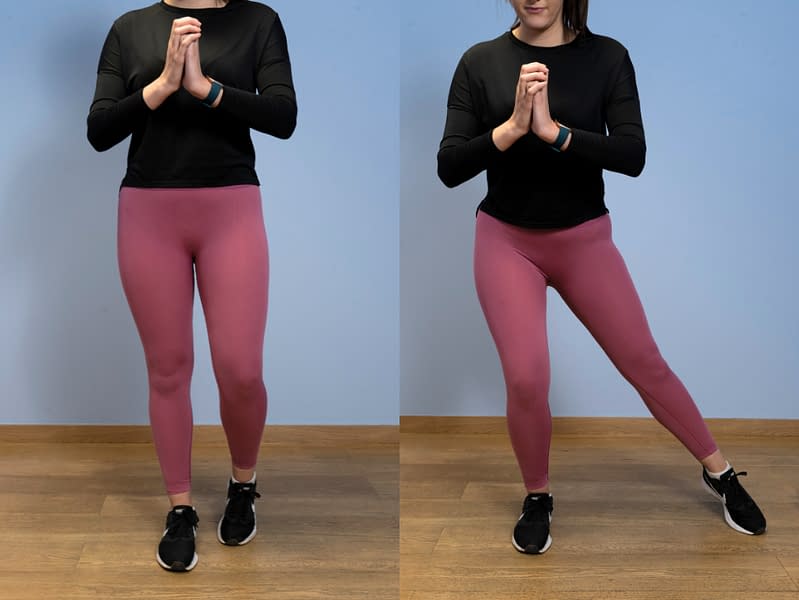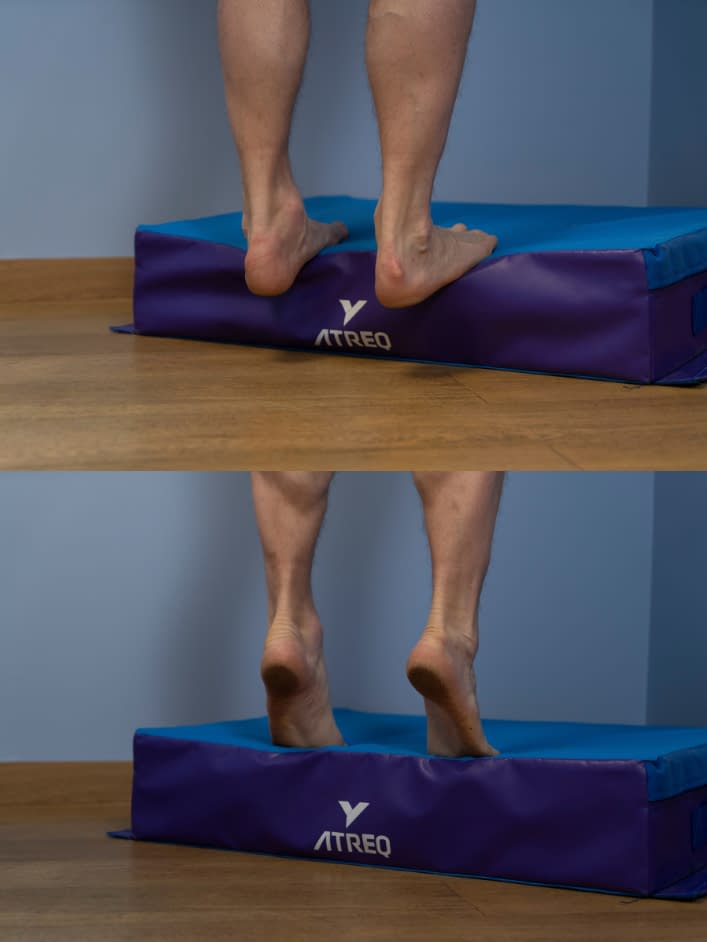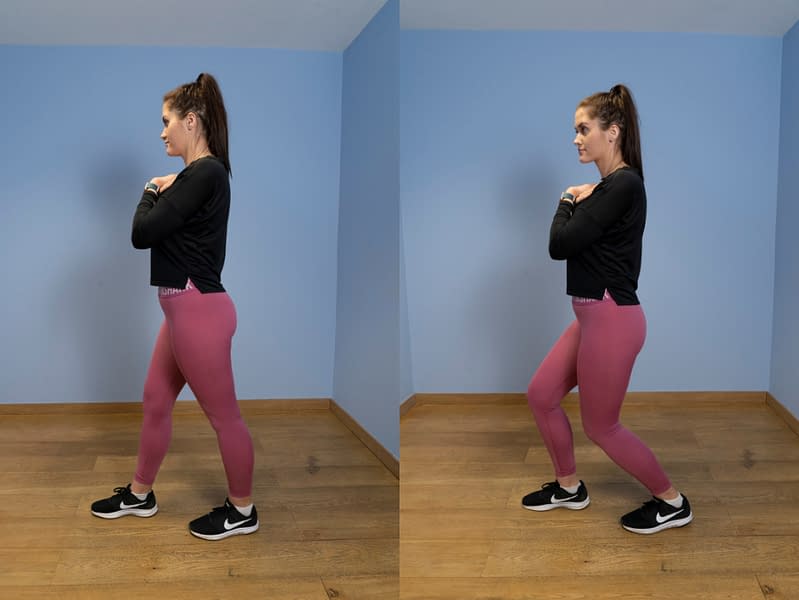Ankle Syndesmosis Injury Advanced Exercise Programme
This phase looks to incorporate more challenging strength and movement-based exercises to try and progress the function of the ankle and help towards a return to activity.
Pain should not exceed 4/10 whilst completing this exercise programme.
1. Balance and reach
- Start by standing with all the weight on one leg.
- Rest the other foot next to the standing foot for balance.
- Now with the non-standing leg reach out sideways (hovering just above the floor) as far as possible whilst at the same time bending the standing leg.
- Then return to the start position maintaining your balance.
- Repeat in a sideways and backwards direction and continue to do this in a cycle of the three movements only touching down if you start to lose your balance.
2. Double leg heel raise from a step - straight legs
- Stand at the bottom of the step facing it.
- Stand upright on the step with only the front half of each foot on the step so that the heels drop down – have a wall/stable object nearby to assist with balance.
- Push down through the front of the feet as if going up on your tip toes – the heel will begin to rise.
- Lift the heels as high as possible and then with control, slowly lower the heels all the way down over the course of a 5 second count.
3. Split squat
- Place one foot forward and the other back to form a comfortable stride with the feet hip-width apart – you can gently hold on to something for balance.
- Keep the chest up and core engaged whilst simultaneously bending both knees so that the hips lower directly downwards – emphasis should be placed on pushing up through the front foot and keeping the knee in line with the hip and ankle.
- With the trailing knee just of the floor, hold this position for a count of 3 seconds before pushing down through the feet to straighten the knees and return to the starting position.
- To progress, hold a small amount of weight in the opposite hand to the leading leg and gradually increase this as strength develops.
We recommend consulting a musculoskeletal physiotherapist to ensure exercises are best suited to your recovery. If you are carrying out an exercise regime without consulting a healthcare professional, you do so at your own risk. If you have any concerns whilst completing these exercises, please contact a healthcare professional.
More Plans
Once a diagnosis of a high ankle sprain has been confirmed, you may be advised to avoid full weight-bearing on the affected joint or provided with a walking boot for 2-4 weeks to assist in managing pain, reducing swelling and promoting quicker tissue healing. Simple, isometric (static) strengthening exercises can begin in non-weight-bearing positions to start to strengthen the muscles around the joint and healing tissue. Low-level manual therapy – as guided by your physiotherapist – can help improve pain, range of movement and swelling (8).
- 0
- 1
- 2
- 3
- 4
- 5
- 6
- 7
- 8
- 910
Once the initial early phase goals of rehabilitation have been reached, further exercises and treatment to restore full range of movement, strength and endurance in the ankle can begin. These exercises may be progressed from non or partial weight-bearing to full weight-bearing and will aim to strengthen the ankle as well as other key muscle groups in the leg.
Manual therapy, mobilisation and soft tissue therapy may be continued to help promote pain relief, restore end of range ankle joint movement (8) and treat residual soft tissue tightness. A phased return to sport or activity can begin, with guidance and monitoring from your physiotherapist. This should not exceed more than 4/10 on your perceived pain scale.
- 0
- 1
- 2
- 3
- 4
- 5
- 6
- 7
- 8
- 910


